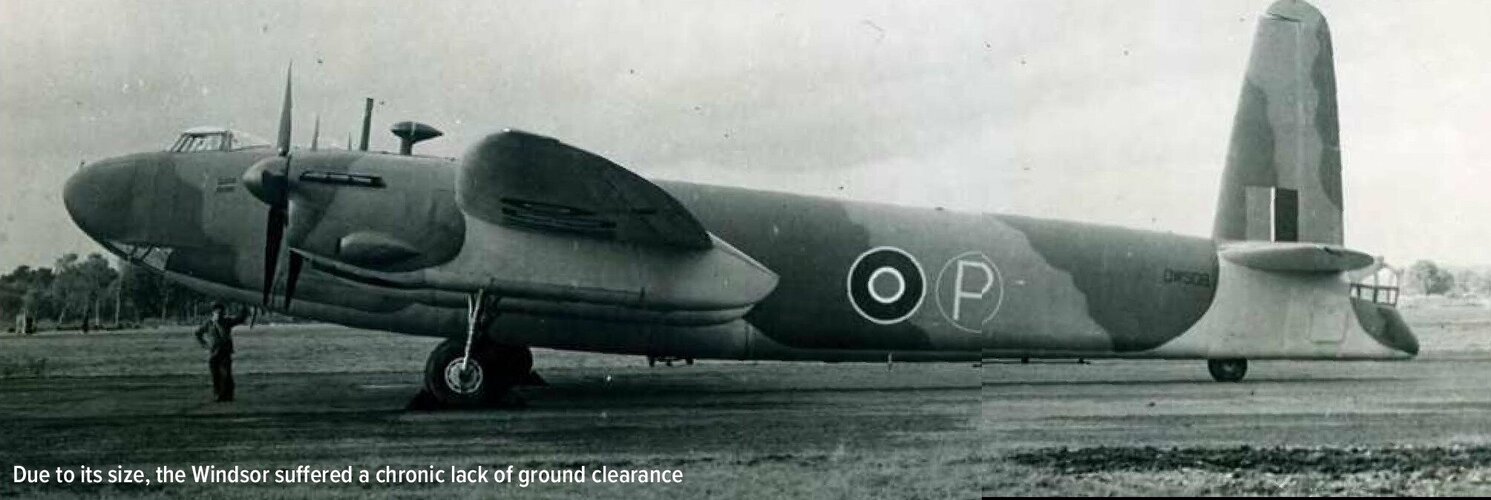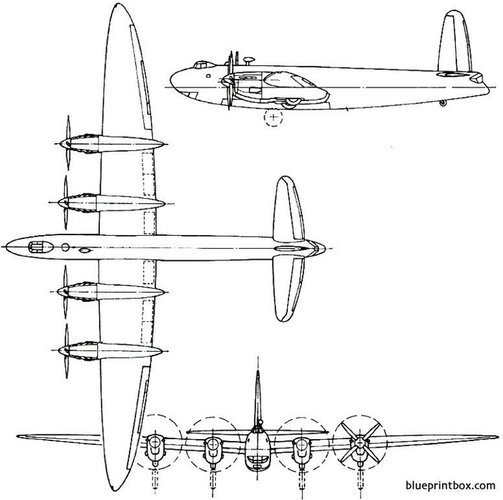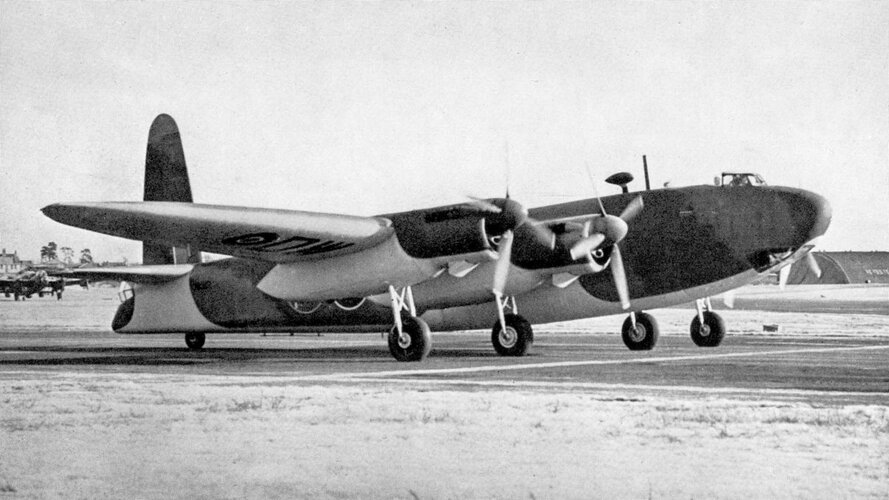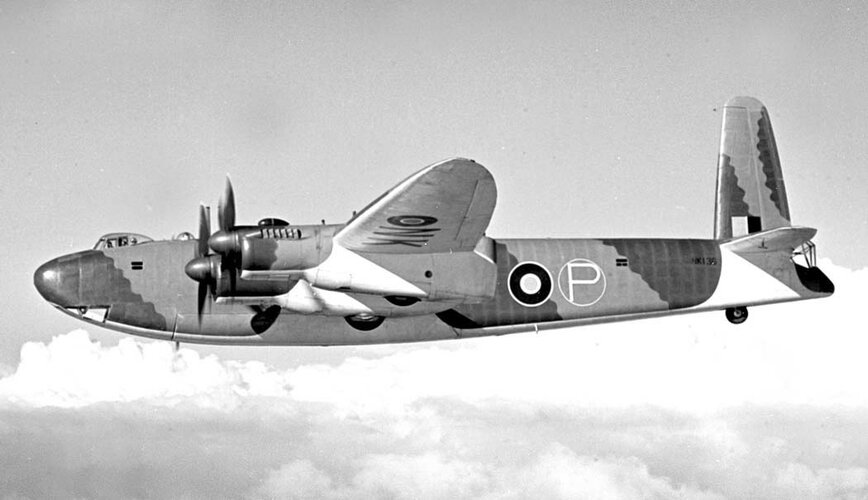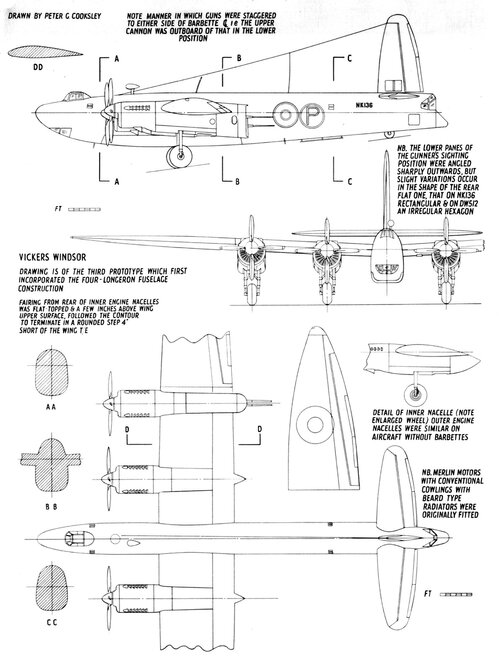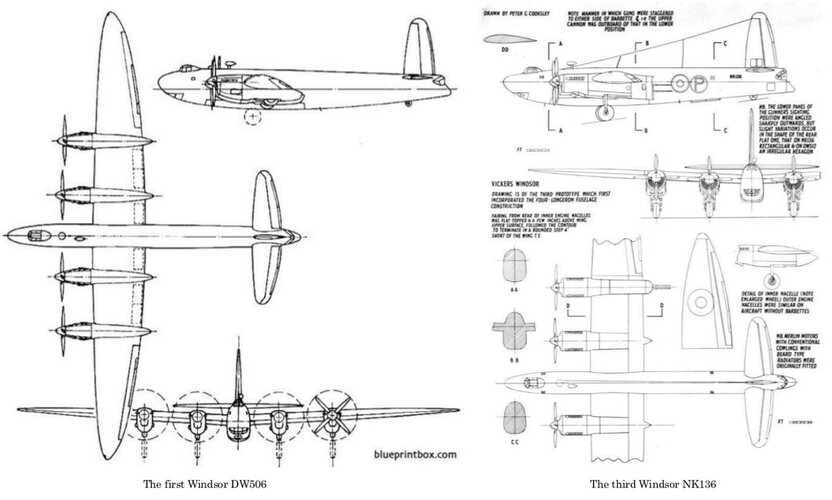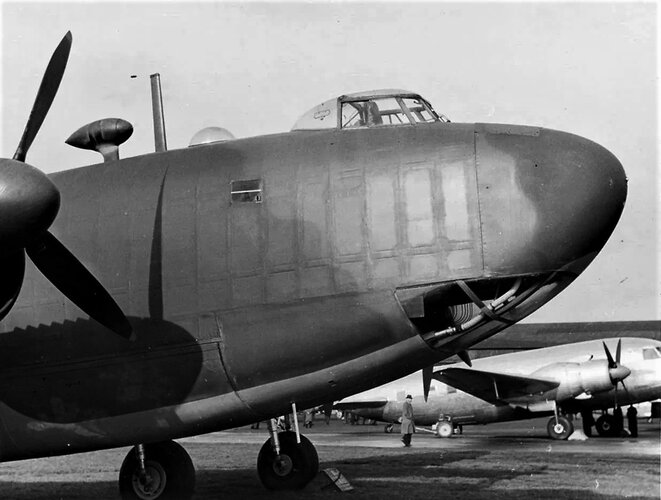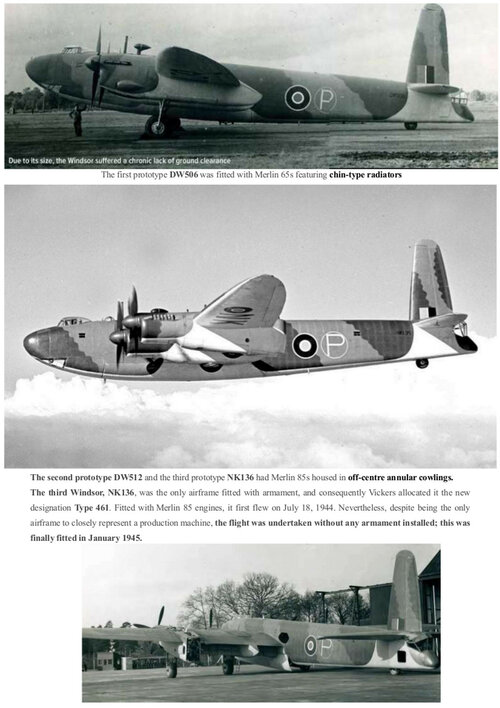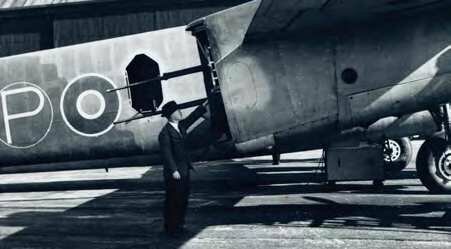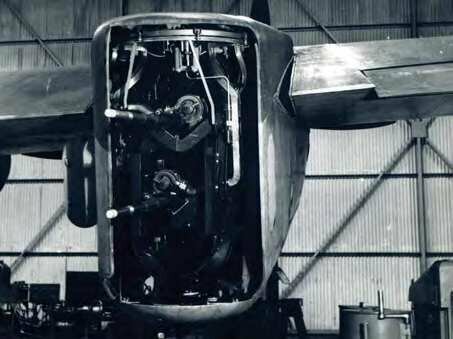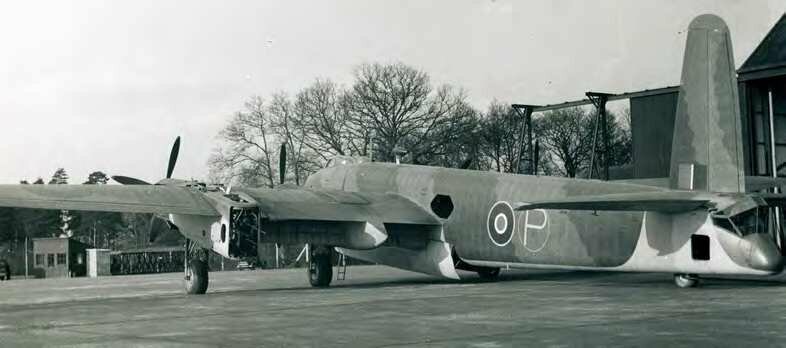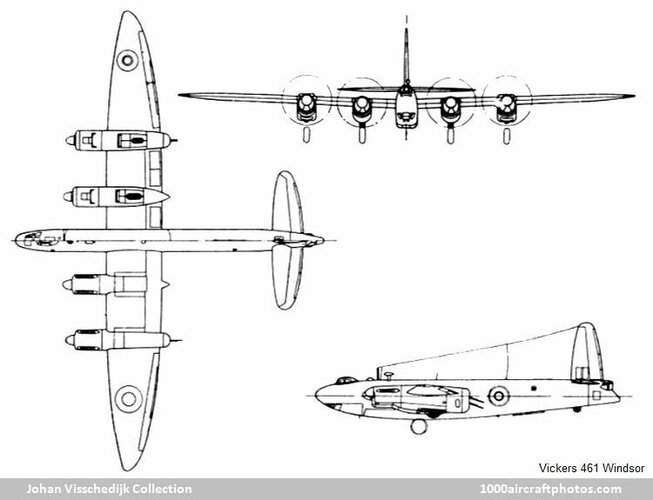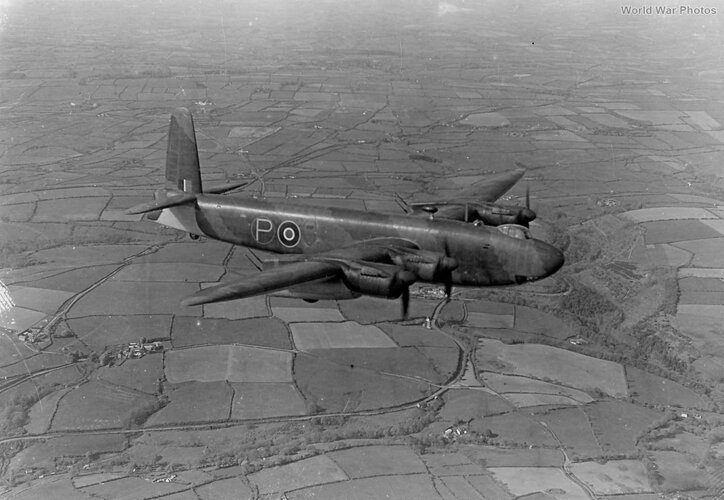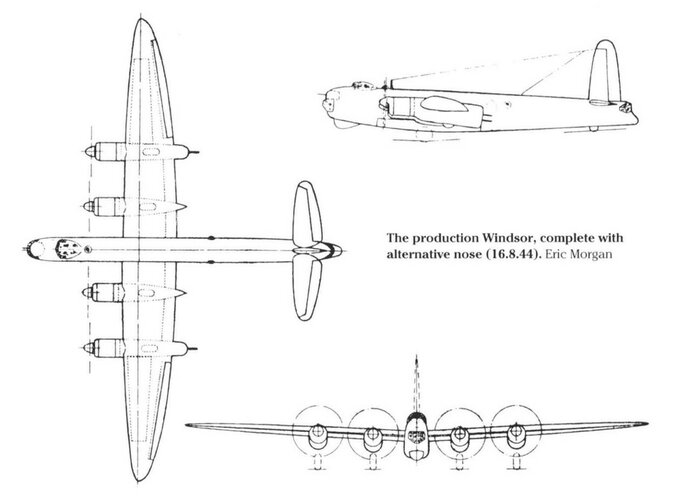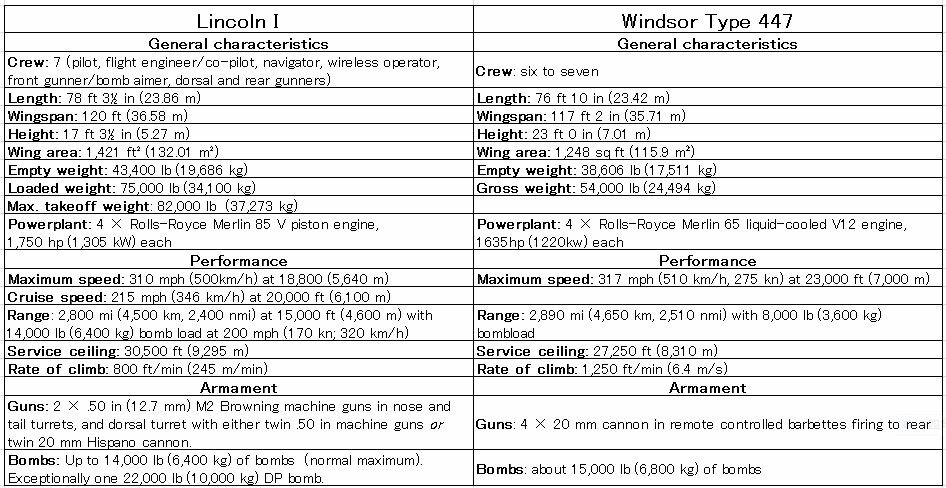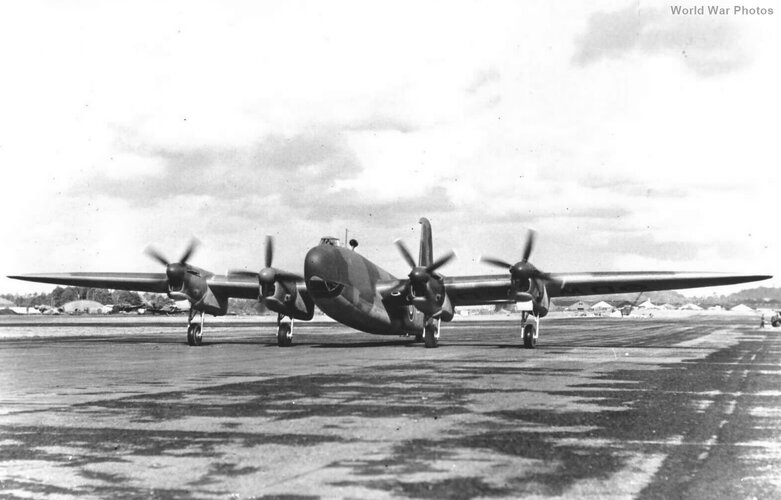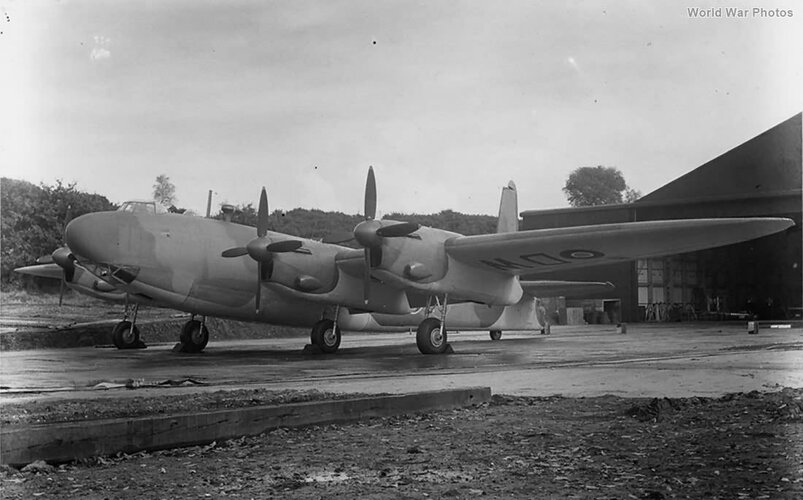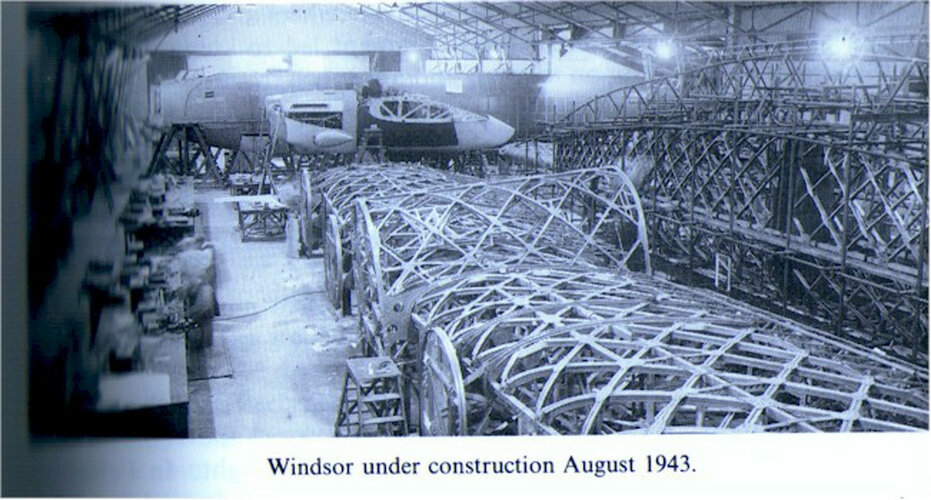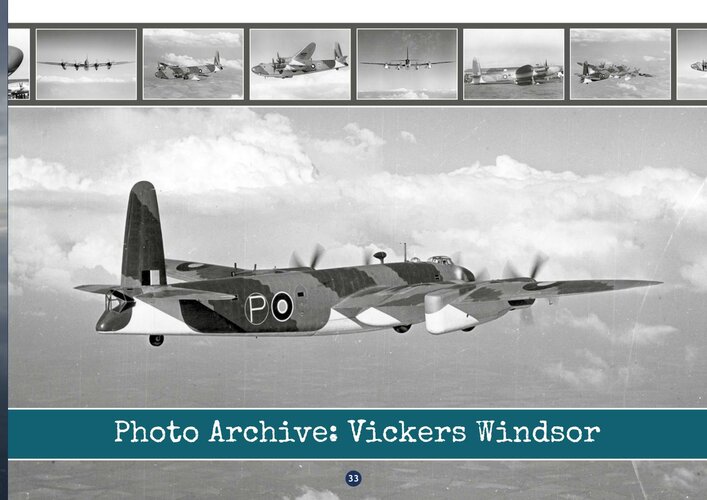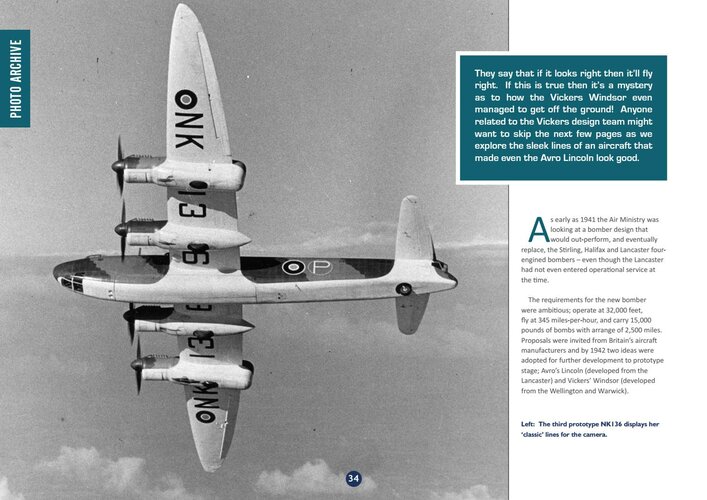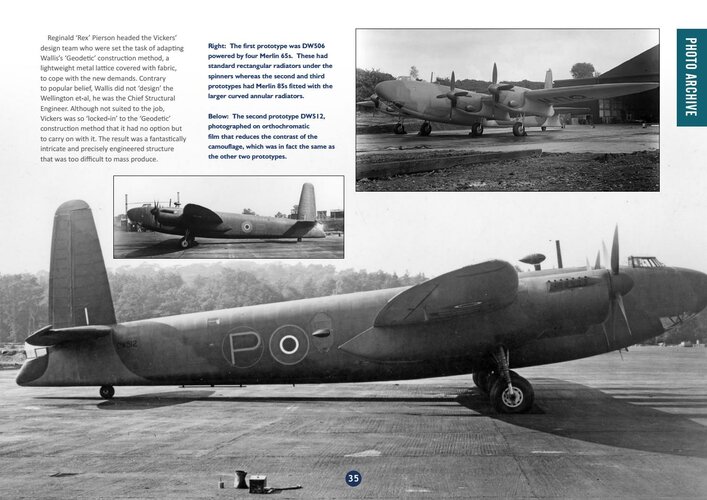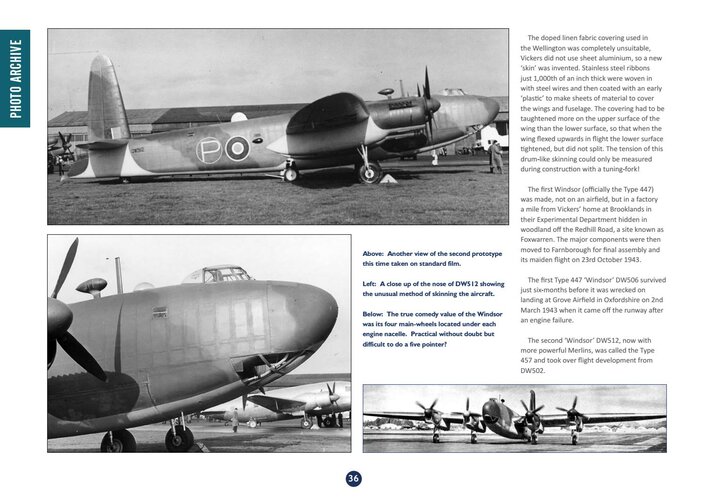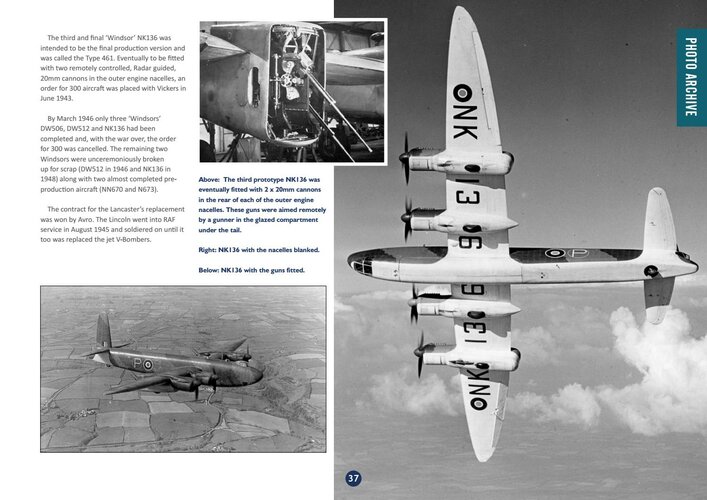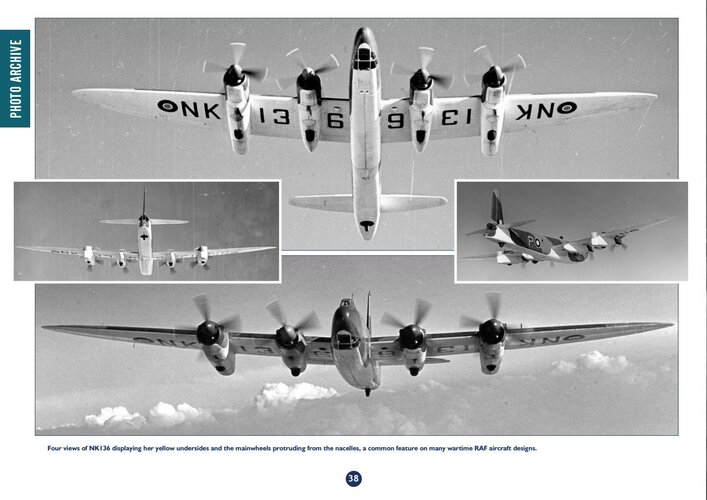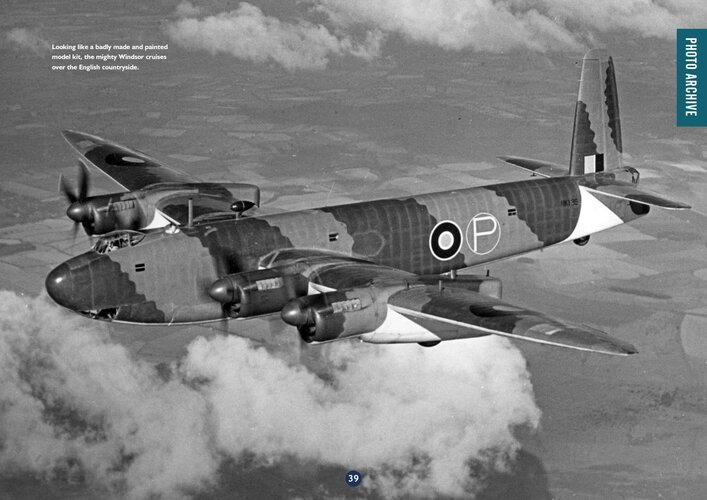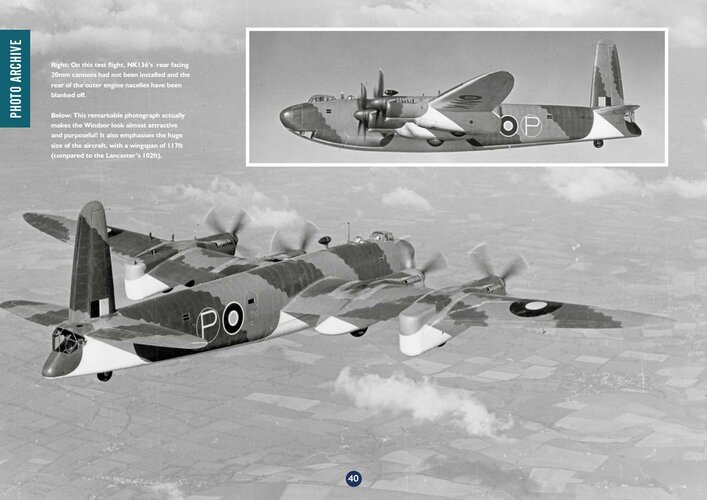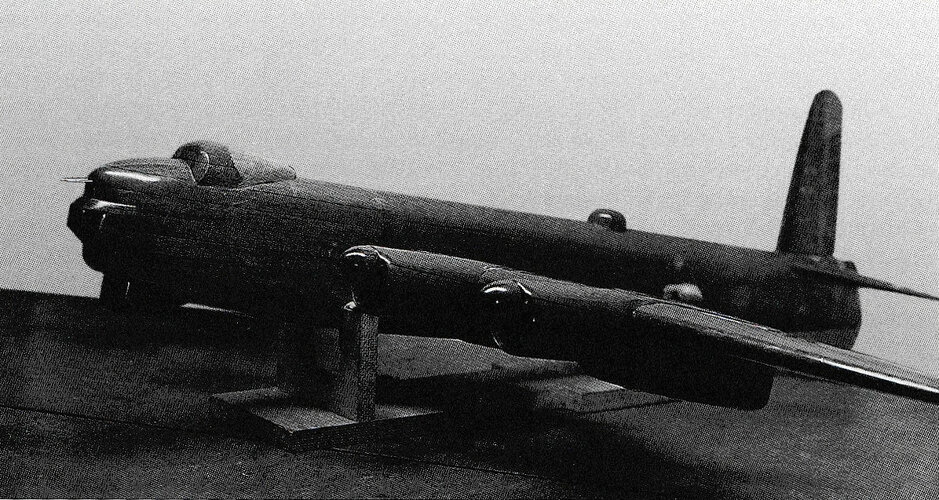blackkite
Don't laugh, don't cry, don't even curse, but.....
- Joined
- 31 May 2007
- Messages
- 8,819
- Reaction score
- 7,716
"In 1941 the firm began devising a high-altitude bomber powered by Rolls-Royce Merlin engines, and in July 1942 the company gained Air Ministry approval to produce two prototypes – later given the serials DW506 and DW512. Covered by Specification B.3/42 stipulating a maximum speed of 350mph at 31,000ft, a ceiling of 38,500ft and a maximum bomb load of 8,000lb, the emerging design was designated the Type 447 Windsor the following year.
Two different engine variants were used during the development phase – prototype DW506 was fitted with Merlin 65s featuring chin-type radiators,
while DW512 and NK136 had Merlin 85s housed in off-centre annular cowlings. The powerplants each drove a wooden four-bladed Rotol propeller. However, with the airframe’s weight rapidly increasing, it was soon realised both ’506 and ’512 would no longer represent production machines.
As a result, three more prototypes were ordered, serials NK136, NN670 and NN673; just the first of these would fly. Vickers decided it would use ’506 and ’512 to provide flight data but limited them to an all-up-weight of 55,000lb. Further modifications, including a much stiffer fuselage introduced to NK136, allowed this restriction to be lifted.
The third Windsor, NK136, was the only airframe fitted with armament, and consequently Vickers allocated it the new designation Type 461. Fitted with Merlin 85 engines, it first flew on July 18, 1944. Nevertheless, despite being the only airframe to closely represent a production machine, the flight was undertaken without any armament installed; this was finally fitted in January 1945.
Classed as pre-production airframes, the fourth and fifth prototypes were never completed as a result."
https://www.key.aero/article/failed-vickers-windsor
Two different engine variants were used during the development phase – prototype DW506 was fitted with Merlin 65s featuring chin-type radiators,
while DW512 and NK136 had Merlin 85s housed in off-centre annular cowlings. The powerplants each drove a wooden four-bladed Rotol propeller. However, with the airframe’s weight rapidly increasing, it was soon realised both ’506 and ’512 would no longer represent production machines.
As a result, three more prototypes were ordered, serials NK136, NN670 and NN673; just the first of these would fly. Vickers decided it would use ’506 and ’512 to provide flight data but limited them to an all-up-weight of 55,000lb. Further modifications, including a much stiffer fuselage introduced to NK136, allowed this restriction to be lifted.
The third Windsor, NK136, was the only airframe fitted with armament, and consequently Vickers allocated it the new designation Type 461. Fitted with Merlin 85 engines, it first flew on July 18, 1944. Nevertheless, despite being the only airframe to closely represent a production machine, the flight was undertaken without any armament installed; this was finally fitted in January 1945.
Classed as pre-production airframes, the fourth and fifth prototypes were never completed as a result."
https://www.key.aero/article/failed-vickers-windsor

